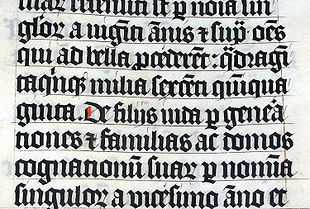Palmer Method

The Palmer Method of penmanship instruction was developed and promoted by Austin Palmer in the late 19th and early 20th centuries. It was largely created as a simplified style of the "Spencerian Method", which had been the major standardized system of handwriting since the 1840s.[1] The Palmer Method soon became the most popular handwriting system in the United States.[2]
Under the method, students were taught to adopt a uniform system of cursive writing with rhythmic motions.
History

The method developed around 1888 and was introduced in his 1894 book Palmer's Guide to Business Writing. Palmer's method involved "muscle motion" in which the more proximal muscles of the arm were used for movement, rather than allowing the fingers to move in writing. In spite of opposition from the major publishers, this textbook enjoyed great success: in 1912, 1 million copies were sold throughout the country. The method won awards, including the Gold Medal at the Panama Pacific Exposition in San Francisco, in 1915, and the Gold Medal at the Sesquicentennial Exposition in Philadelphia, in 1926.[3]
Proponents of the Palmer Method emphasized its plainness and speed, that it was much faster than the laborious Spencerian Method, and allowed the writer to effectively compete with the typewriter.[4] To educators, the method's advocates emphasized regimentation, and that the method would thus be useful in schools to increase discipline and character, and could even reform delinquents.[5]
The Palmer Method began to fall out of popularity in the 1950s, and was eventually supplanted by the Zaner-Bloser method, which sought to teach children manuscript before teaching them cursive, in order to provide them with a means of written expression as soon as possible, and thus develop writing skills.[6] The D'Nealian method, introduced in 1978, sought to address problems raised by the Zaner-Bloser method, returning to a more cursive style. The Palmer company stopped publishing in the 1980s.[7]
References
- ↑ Tyler; RobinDVC (2010-04-12). Palmer Method of Penmanship. NYU Dead Media Archive, 12 April 2010. Retrieved from http://cultureandcommunication.org/deadmedia/index.php/Palmer_Method_of_Penmanship#Precursors_and_Palmer.27s_Method.
- ↑ Apps-Bodilly, Susan (2013). One room schools : stories from the days of 1 room, 1 teacher, 8 grades. Wisconsin Historical Society. p. 61. ISBN 9780870206160. Retrieved 24 January 2015.
- ↑ Vitolo, Joseph M. "AN Palmer (1860-1927)". The Penmen Archives. Retrieved 24 January 2015.
- ↑ Trubek, Anne (2009-12-17). Handwriting Is History. Pacific Standard, 17 December 2009. Originally retrieved from http://www.miller-mccune.com/culture-society/handwriting-is-history-6540/. Retrieved on 2012-06-10 from http://www.psmag.com/culture-society/handwriting-is-history-6540/.
- ↑ Smith, Tracy (2011-01-23). Is penmanship being written off? CBS News, 23 January 2011. Retrieved from http://www.cbsnews.com/stories/2011/01/23/sunday/main7274525.shtml.
- ↑ Alston, Jean; and Taylor, Jane (1987). Handwriting: Theory, Research and Practice. Nichols Publishing Company, New York, 1987. Retrieved from http://books.google.com/books/about/Handwriting.html?id=Jpg9AAAAIAAJ.
- ↑ Makala, Jeffrey. "Born to Please, Art of Handwriting Instruction, Spencerian and palmer methods". University Libraries' Rare Books and Special Collections. University of South Carolina. Retrieved 24 January 2015.
Bibliography
- Thornton, Tamara Plakins. Handwriting in America. New Haven: Yale University Press, 1996. ISBN 0-300-06477-2
- Gard, Caroll. Writing Past and Present. New York: A. N. Palmer Company, 1937 ISBN none
External links
- A. N. Palmer
- Original 1894 Edition of Palmer's Guide to Business Writing at Library of Congress
- 1935 edition of The Palmer Method of Business Writing at archive.org
- The Palmer Method of Business Writing Scanned images of the 1935 edition of A.N. Palmer's handwriting textbook
- Método Palmer de Caligrafía Comercial Scanned images of the 1949 Spanish Edition of A.N. Palmer's textbook
| ||||||||||||
